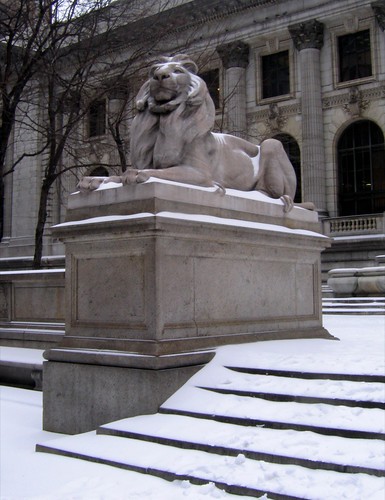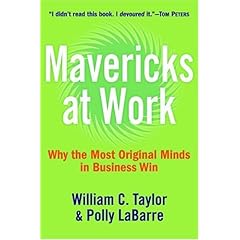Libraries are a natural source of inspiration for the curious and creative.
Listening to Paul Holdengraber, the Director of the New York Public Library's Public Program Series, is an inspiration in itself. Here are my notes on an interview filmed with him in 2007.

Similarly, Jay Walker is a man who believes a library should have objects to inspire -- as well as books. There is a 7-minute TED video of him showing off some of the treasures in his amazing private library: Jay Walker: A library of human imagination -- including an Enigma machine, a flag that's been to the moon and back, and a real Sputnik satellite.
Wired did an article on his library not long ago -- Browse the Artifacts of Geek History in Jay Walker's Library - with plenty of photos. Go check it out.
I'm going to end with a plug for the book I think should be in every library -- as a source of inspiration: Alan Fletcher's The Art of Looking Sideways (2001), which has been described as "the ultimate guide to visual awareness, a magical compilation that will entertain and inspire all those who enjoy the interplay between word and image, and who relish the odd and the unexpected. "
Fletcher, a famous British graphic designer, is now dead, but here's a YouTube video of him talking about his unusual book.
Flickr photo credits: lion: MacRonin47; library: jamesjk ; Jay Walker library
Listening to Paul Holdengraber, the Director of the New York Public Library's Public Program Series, is an inspiration in itself. Here are my notes on an interview filmed with him in 2007.

His job is to "oxygenate" the New York Public Library -- to make the famous lions outside "roar" -- to create a library without walls.
We need to make people think it's sexy to think -- that there should be both information and inspiration. We have to free the books. To have a thought is to caress our brains. Thinking is exciting!The blog Design*Sponge has done a couple of videos showing how a librarian at the New York Public Library has inspired five different artists -- a glassblower, a letterpress printer, a maker of ceramic dishes, etc. -- with material from the library's collection, whether images in books or artifacts themselves -- maps, old postcards, prints, etc. See the videos on the NYPL webpage: Design by the Book.
Inspiration comes mainly from arguments around the kitchen table. We need each other desperately as humans (e.g., you can't tickle yourself). A library is a space of conviviality -- which can help us get references in common. We all need something to talk about.
Curiosity is one of the most important things we can arm ourselves with in life -- if we're not curious at 20, we'll be boring at 50. We must inspire curiosity -- to be interested in the world -- to have interests -- something to replenish our minds.

Similarly, Jay Walker is a man who believes a library should have objects to inspire -- as well as books. There is a 7-minute TED video of him showing off some of the treasures in his amazing private library: Jay Walker: A library of human imagination -- including an Enigma machine, a flag that's been to the moon and back, and a real Sputnik satellite.
Wired did an article on his library not long ago -- Browse the Artifacts of Geek History in Jay Walker's Library - with plenty of photos. Go check it out.
I'm going to end with a plug for the book I think should be in every library -- as a source of inspiration: Alan Fletcher's The Art of Looking Sideways (2001), which has been described as "the ultimate guide to visual awareness, a magical compilation that will entertain and inspire all those who enjoy the interplay between word and image, and who relish the odd and the unexpected. "
Fletcher, a famous British graphic designer, is now dead, but here's a YouTube video of him talking about his unusual book.
Flickr photo credits: lion: MacRonin47; library: jamesjk ; Jay Walker library




